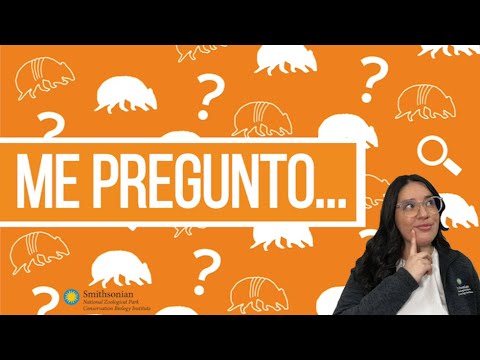– The concept and drivers of migration in wildlife
– The role of migrations in ecosystem dynamics and conservation challenges
– The impact of human activities on migration patterns and solutions for mitigation
Migration—a phenomenon as ancient as life itself—plays a pivotal role in the fabric of ecosystems worldwide. This natural event, a seasonal movement where species travel from one region to another, is vital to ecological balance and biodiversity. Understanding “Me pregunto – ¿Qué es la migración?” involves delving into the reasons behind these movements, exploring the implications for our ecosystems, and recognizing the challenges and solutions tied to human impact. This in-depth exploration sheds light on the intricate dance between moving species and the environment, highlighting the role of zoology, zoo management, and wildlife conservation in fostering a sustainable future.
**The Concept and Drivers of Migration in Wildlife**
Migration is primarily driven by the search for resources, such as food and breeding sites, or by the need to escape harsh environmental conditions. Animals, ranging from the smallest butterfly to the largest whale, undertake these daunting journeys to survive and reproduce, ensuring their species’ survival. The triggers for these movements are deeply rooted in an animal’s genetic makeup, influenced by environmental signals like temperature changes, food availability, and photoperiods.
Bird migration is one of the most well-documented phenomena, with species like the Arctic Tern journeying from pole to pole. However, many other species also participate in this critical life process. African elephants travel in response to the seasons, moving towards water sources during the dry season. Similarly, monarch butterflies make one of the most iconic migrations, traveling thousands of miles across North America to reach their wintering grounds in Mexico.
Understanding these migrations is not just about tracking the incredible journeys made by these animals. It’s about grasping the ecological importance of these movements. Migratory species act as pollinators, prey, and predators in their respective ecosystems, contributing to the health and sustainability of these environments. Additionally, their movements aid in the distribution of nutrients across vast geographic areas.
**The Role of Migrations in Ecosystem Dynamics and Conservation Challenges**
Migration influences ecosystem dynamics in profound ways. The presence or absence of migrating species can greatly affect local biodiversity and the health of an ecosystem. For instance, migratory birds contribute to seed dispersal and pollination, supporting plant regeneration and growth. Due to disrupted migration patterns, their absence can lead to declines in certain plant species, affecting the entire food web.
Conversely, the conservation of migratory species presents unique challenges. Protecting these animals requires cooperation across borders and the preservation of critical habitats that these species use throughout their life cycles. International treaties and organizations, such as the Migratory Bird Treaty and the Convention on Migratory Species, aim to foster cooperation to protect migratory routes. Zoo management and wildlife conservationists also play a critical role by engaging in research, breeding, and public education efforts to support migratory species.
**The Impact of Human Activities on Migration Patterns and Solutions for Mitigation**
Human activities have significantly altered the landscapes animals once traversed freely. Habitat destruction, climate change, pollution, and the construction of barriers, such as fences and roads, pose severe threats to migrating species. The disruption of traditional routes can lead to some species’ decline or even extinction as they fail to find food, mates, or suitable breeding grounds.
Addressing these challenges requires a multifaceted approach. One strategy is to create protected corridors that allow safe passage and reconnect fragmented habitats. Efforts to mitigate climate change, reduce pollution, and adopt wildlife-friendly agricultural practices also preserve migratory patterns. Zoos and aquariums are not just about conservation; they are vital centers for educational outreach, teaching the public about the importance of migration and how to protect these natural phenomena.
Innovative technologies, such as satellite tracking and computer modeling, offer new insights into migration patterns, helping conservationists develop more effective protection strategies. These tools enable tracking species over vast distances, revealing important information about timing, routes, and the challenges animals face along the way.
Understanding “Me pregunto – ¿Qué es la migración?” reveals the complexity and beauty of these natural processes. It underscores the interconnectivity of life on Earth and the importance of conservation efforts. By securing the future of migratory species, we protect biodiversity and maintain the health of the world’s ecosystems. The journey towards safeguarding these incredible migrations is challenging but essential for preserving our planet’s natural heritage.
*****
Source Description
¿Alguna vez te preguntas sobre algo? Acompaña a Laura en este episodio de ME PREGUNTO para responder la pregunta ¿qué es la migración? Explora el Zoológico Nacional y el Instituto de Biología de la Conservación del Smithsonian para responder esta pregunta, siga a dos aves migratorias y descubra por qué se embarcan en estos viajes. Esta serie de videos es para exploradores de todas las edades, pero está optimizada para estudiantes en los grados K-5.
Después de verlo, explore más videos, recursos y próximos programas aquí: https://nationalzoo.si.edu/education/school-programs
Siete Acciones Sencillas para Vivir de Forma Respetuosa con las Aves:
https://nationalzoo.si.edu/migratory-birds/7-simple-actions-live-bird-friendlyr
Un gran agradecimiento a lo siguiente:
Mapa de distribución del Turpial de Baltimore proporcionado por Birds of the World, Robert S. Ridgley y NatureServe.
Mapa del área de distribución del pato golondrino norteño proporcionado por Birds of the World y BirdLife International.


